While the Paralogos species does not have what are commonly called traits in the CS community, there are certain appearance restrictions and guidelines that you'll need to follow, which are outlined in this guide.
General Anatomy Guidelines
MUST:
- Generally based on Parasaurolophus anatomy
- 🖤 aka: digitigrade, two arms, two legs, one head with one crest, one tail
- Their own unique word focus (different languages can be used for similar themes/meanings, however)
- A leopard gecko inspired squishy/softer tail with at least 4 segments
- Hand-like appendages (variance is allowed depending on the word focus in question)
- 🖤 Dinosaurian feet (claws are optional / the feet can look more paw-like, but absolutely cannot look humanoid)
- 🖤 Sized between 40 and 100 cm / 15-39~ ish inches.
- For words like 'microscopic' or 'giant', these limits can be stretched to a minimum of 20 cm and a maximum of 140 cm (Approximately 8 and 55 in, respectively.)
- Wicked Paralogos are the only exception to these size limits
- Head fins are optional, but most have them
MUST NOT:
- 🖤 Any design element/marking/color decidedly unrelated to their word focus (f.e. A “tree” Paralogos with wings, or a “cat” Paralogos that is an unnatural color)
- Any Word Focus that is banned by the group
- These banned terms are generally rather negative, political, religious and/or copyrighted terms. Certain illnesses for example (f.e. cancer) are also so overwhelming that we ask to be sensitive to those affected and do not allow use of said word types. The group does have a partially complex blacklist, currently. Some terms just end up being too nuanced to list off. If you're unsure about a certain word or would like to inquire about this list further, please use the Ask Questions Here Prompt.
- 🖤 Paralogos cannot have functional additional ears of other species (even if it would make sense word focus-wise)
- They still need the dinosaurian head profile. However, you can see many Paralogos sport faux ears as headbands, clips and more, so get creative!
- Paralogos’ bodies cannot appear transparent without the use of their Tier 1 Ability.
- This is because Paralogos’ insides consist of pure light, so any transparent patch would just be equivalent to a light.
- This only includes their head, body and tail (at least the first four sections). Any other additional body part may be transparent without the use of Tier 1 Magic.
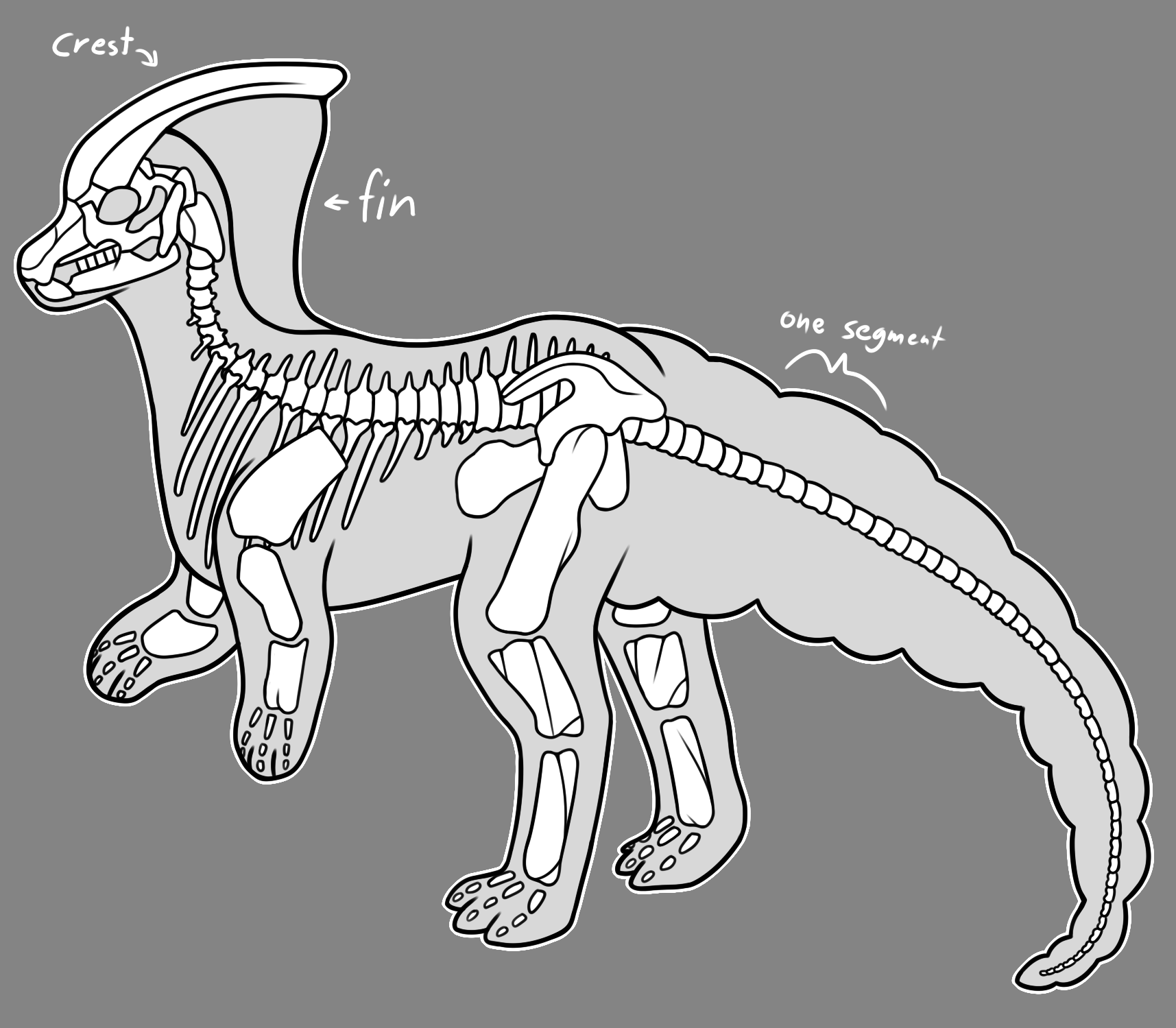
Wickeds are a type of Paralogos that have developed an extreme obsession/bond with their word focuses and thus are able to break certain anatomy rules. (See Chapter 4 - Wickeds)
( Every rule listed on this guide that may be broken by a Wicked is marked with a 🖤. )
They may also have:
- Any design feature, even if it doesn't make sense for the word focus / that would otherwise only be accessible to Paralogos who have a word focus for which the feature would make sense. (f.e. Wings, horns, etc.)
- More (or less) limbs than regular Paralogos and/or limbs with unusual placements (f.e. Multiple heads or crests, additional arms/legs, etc.)
- Distorted anatomy
- Up to three Tier 1 Magic Abilities
- Functional external ears of any type
- A height of 3x the maximum for regular Paralogos, meaning at most 3 meter / 9,8 ft
However, they always need:
- At least one crest
- Lights of some kind
- A segmented tail (at least 4 segments)
- Their colors & patterns/markings to relate to their word in some way
And they may NOT:
- Have a banned word focus
- Be a Triceridos
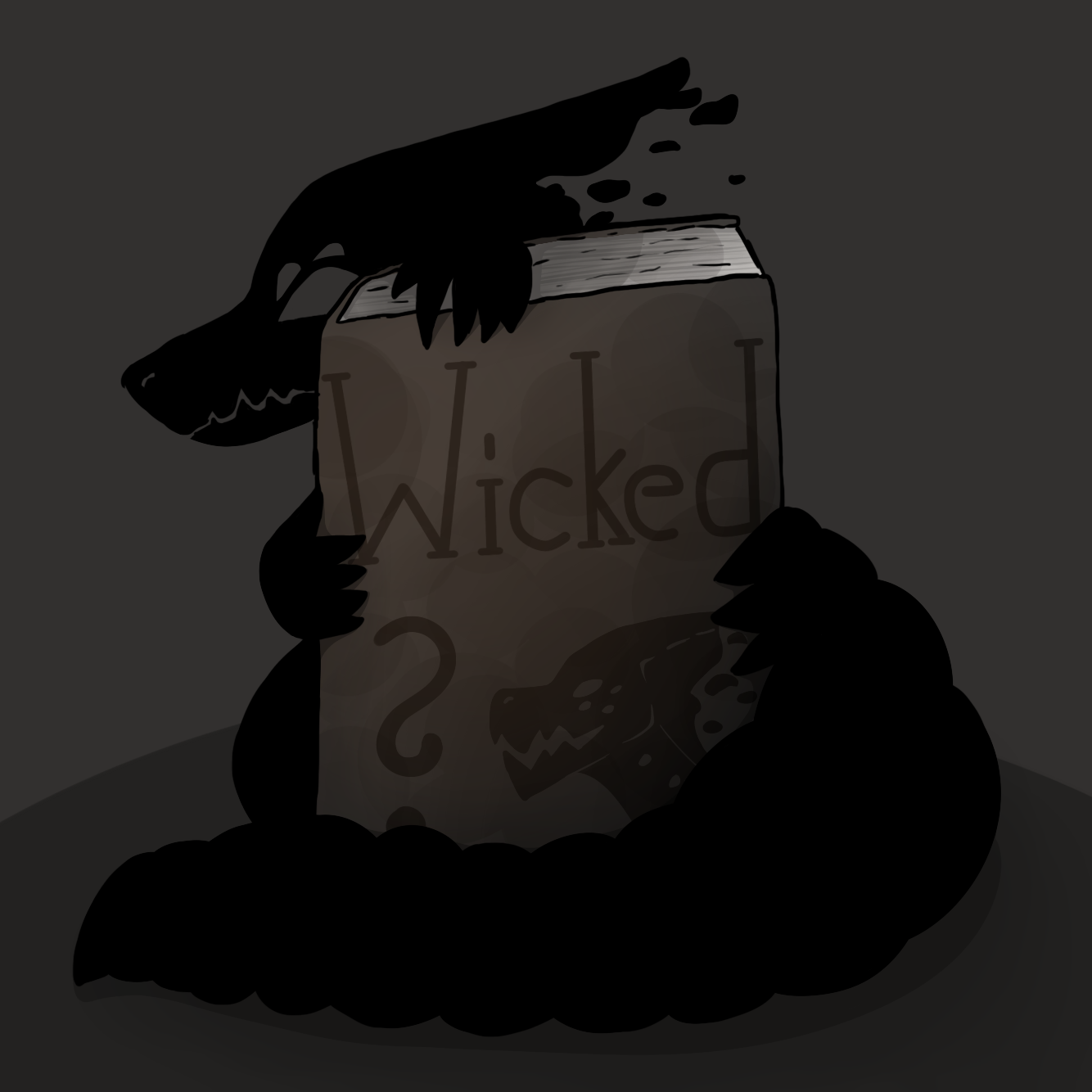
Triceridos are a subspecies of Paralogos who are based on idioms instead of words, and have ceratopsian features instead of parasaurolophian.
- Triceridos’ MUST always have a ceratopsian/shield-like crest, two forehead horns and one nose horn - these can however vary in size, shape and color (as well as material for the horns)
- Triceridos’ MUST have their unique idiom focus (different languages can be used for similar themes/meanings, however)
- Triceridos’ may NOT be Wicked
- Apart from these three rules, Triceridos’ are identical to standard Paralogos
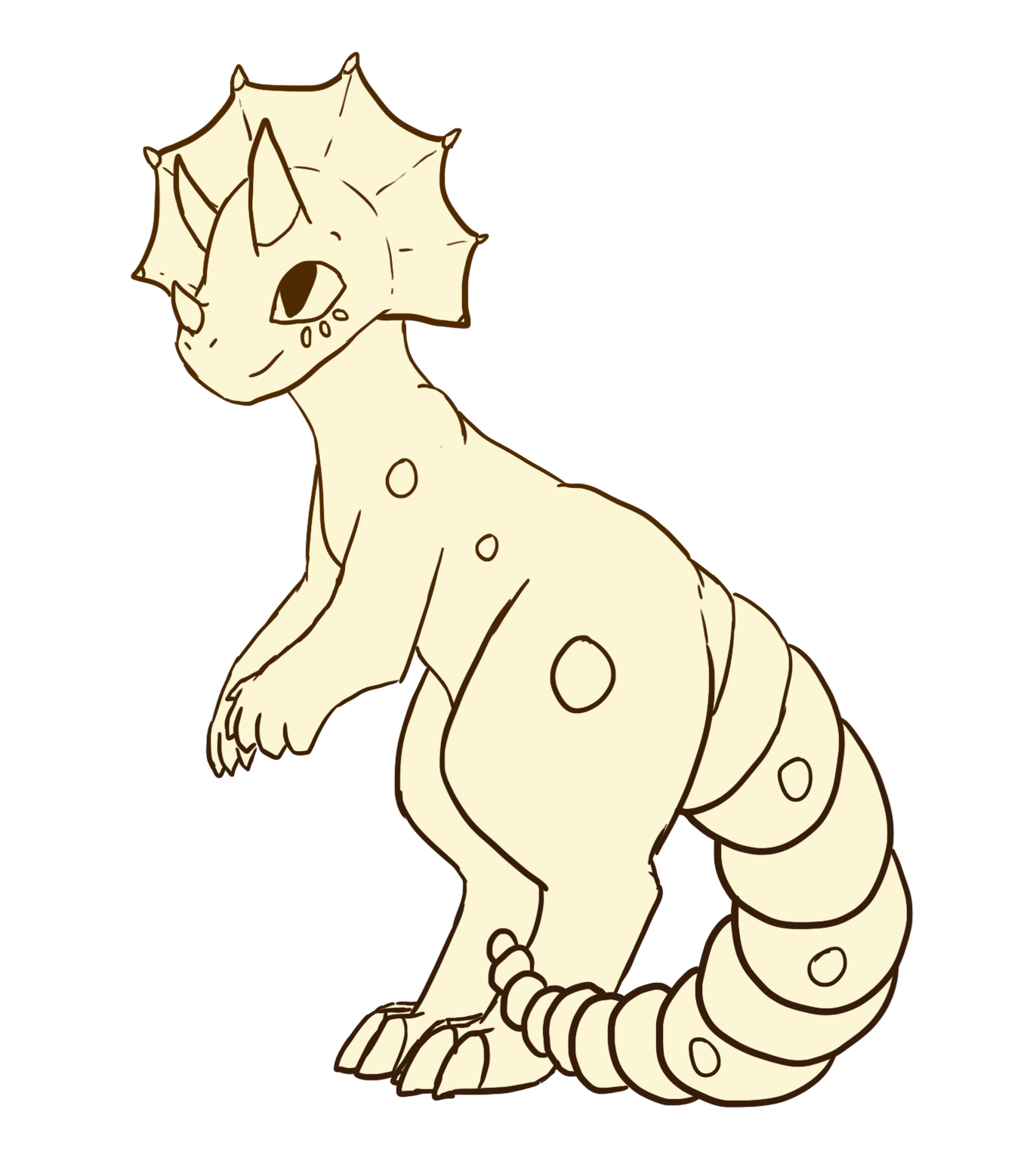
Pterophors are a subspecies of Paralogos who are based on metaphors (or similes) instead of words, and have pterodactylian features instead of parasaurolophian.
- Pterophors MUST always have a beak and wing arms - these can however vary in size, shape and color (as well as material for the wings)
- Pterophors generally have thinner tails than other Paralogos species, although they still need at least four (4) segments.
- Pterophors MUST have a metaphor (or simile, which uses "like" or "as" to compare two things) focus - these do not have to be unique, however.
- Pterophors may NOT be Wicked
- Apart from these four rules, Pterophors are identical to standard Paralogos
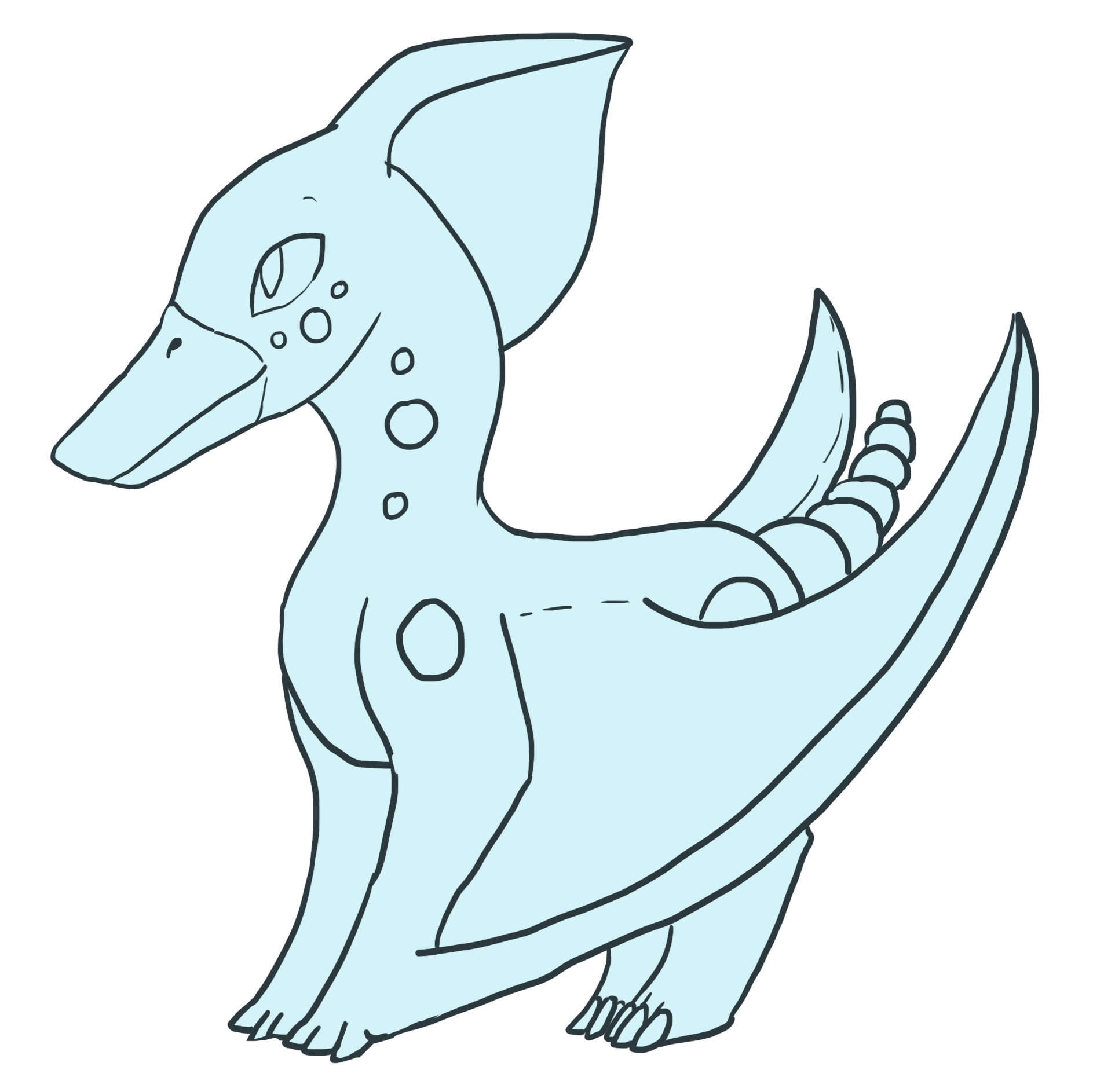
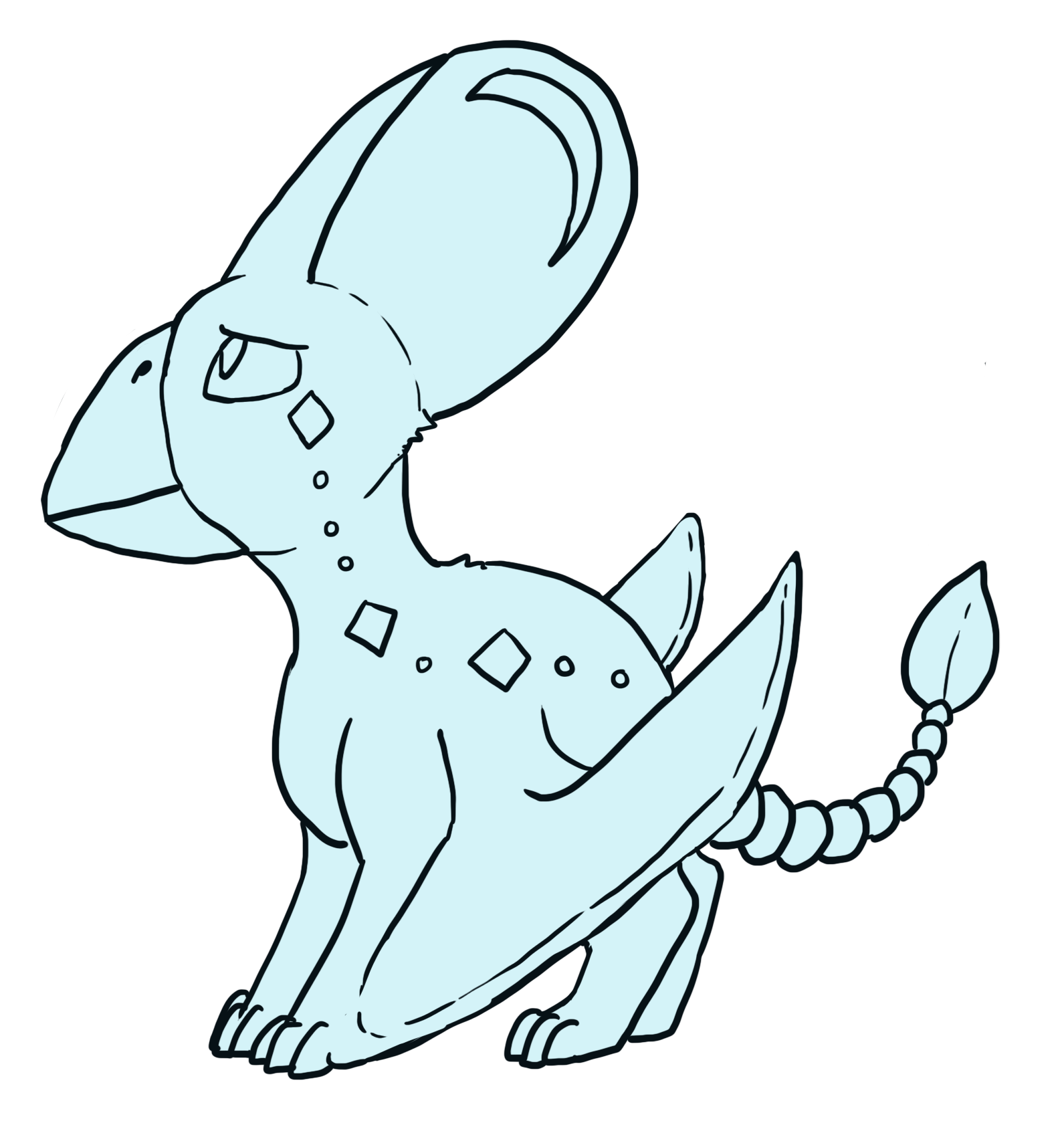
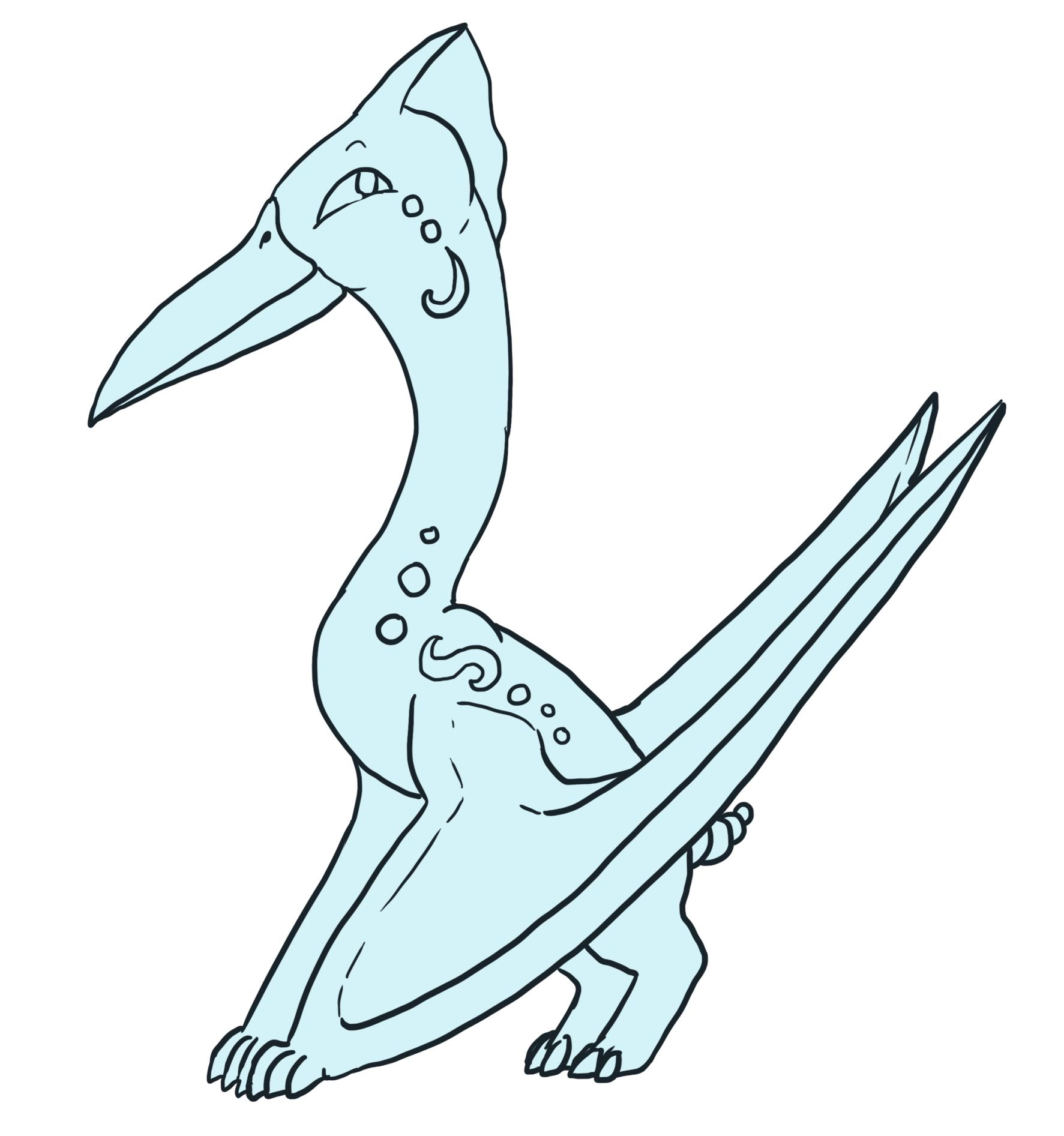
Anatomy Variation
- Pterophors' proportions can vary greatly. In particular, beak and wing shapes and sizes, as well as neck lengths.
- These variations can be used to imitate the anatomy of different species of pterosaur (or simply for aesthetic reasons), provided they still follow the rules outlined above.
- The two images to the left are examples based on Tupandactylus imperator (left) and Quetzalcoatlus (right).
Detailed Anatomy Guidelines
Heads
- 🖤 Paralogos’ heads must always have a general parasaurolophus-like/dinosaurian anatomy (aka: protruding snout, two nostril slits, one mouth, two eyes, one crest)
- 🖤 Their head shape may be slightly altered to fit their word focus more (f.e. a very slight beak-like accent on their upper lip for bird-related words), but must always be recognizable as dinosaurian.
- “Dinosaurian” in this case refers to both a more cartoonish dinosaur anatomy, as well as realistic parasaurolophus-esque anatomy (meaning you are always free to draw/depict your Paralogos with a parasaurolophus-like “beak”, regardless of their word focus).
- 🖤 Paralogos MAY NOT have external ears.
- This rule applies to all (non-wicked) Paralogos, regardless of word focus. A Tier 1 Ability cannot be used to give a Paralogos ears, either.
- However, a Paralogos may wear a headband with fake ears attached.
Eyes
- Paralogos generally always have two eyes, each with a visible pupil, iris and sclera. These can freely vary in shape and color.
- 🖤 Solid-colored eyes are possible for certain word-focuses (f.e. animals whose eyes appear solid black). Same rules apply to faceted eyes and similar (f.e. A “fly (insect)” Paralogos may have faceted eyes).
- 🖤 A Paralogos is able to appear to have one or no eyes (outside of disabilities, which are always allowed) or more than two eyes - assuming it would make sense for their word focus. (f.e. an “earthworm” Paralogos can have no eyes, and a “spider” Paralogos can have eight eyes)
- Please note though that having functional eyes outside of the Paralogos face (f.e. on the body or tail) would require the use of their Tier 1 Ability.
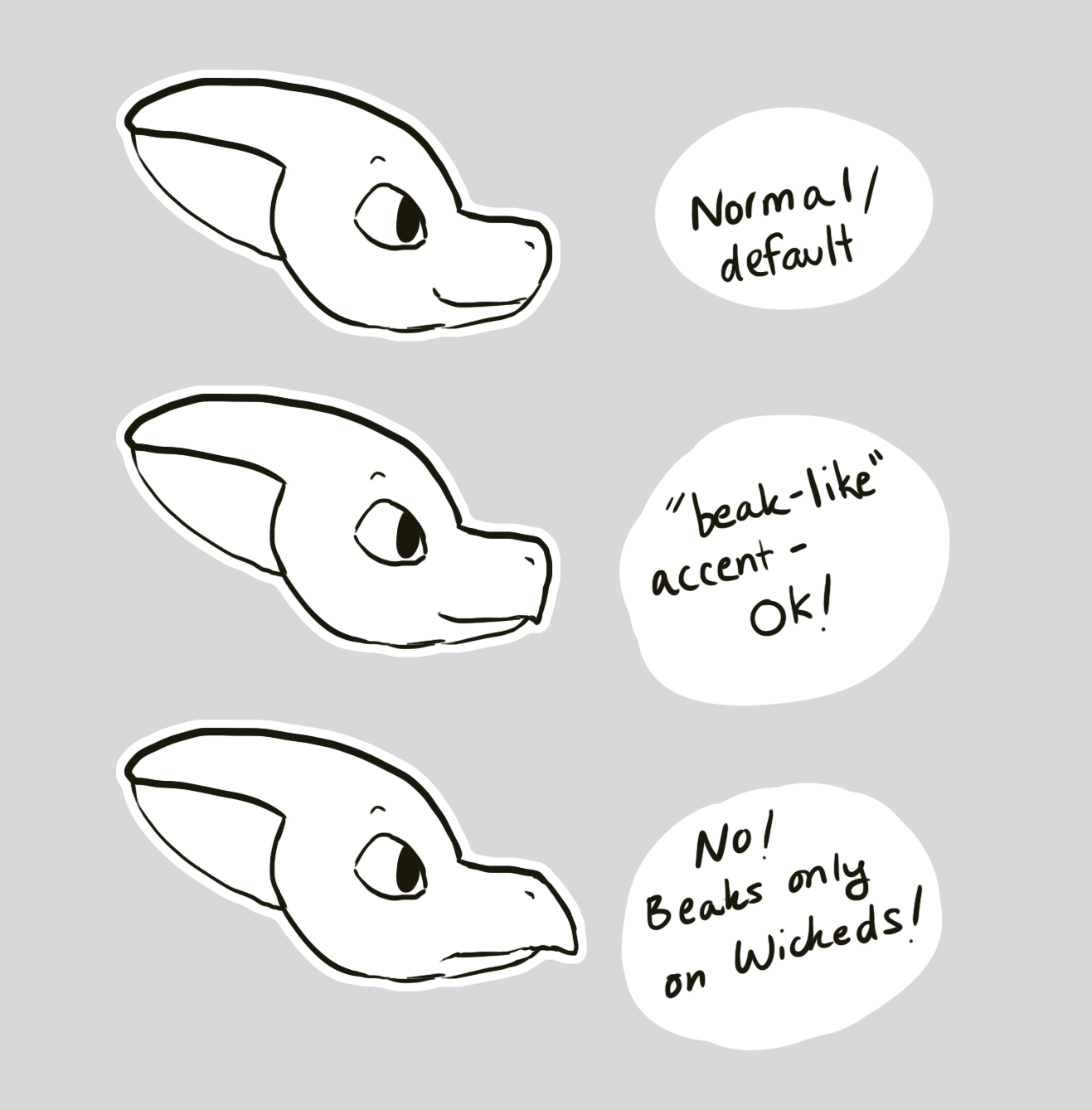
Crests
- Paralogos MUST have a bony crest at the top/back of their head
- It can generally vary in length, width and shape, but must always be clearly visible/recognizable as the Paralogos’ crest
- 🖤 Paralogos may only have one singular crest (though the crest itself is able to branch off or otherwise have a non-standard shape, assuming it makes sense for the Paralogos’ word focus)
- Despite only ever having one singular “real” crest, Paralogos may have additional crest-like lumps/spikes further down their neck (vertically) that may also have fins
- 🖤 They may not, however, appear to have additional crests next to each other (horizontally) on their head (to avoid looking too dragon-like)
- Please note that crests and horns are considered fully different features; whether a Paralogos is allowed to have horns depends entirely on their word focus
Fins
- It is extremely common for Paralogos to have fins on the back of their head / hanging from their crest
- They can vary greatly in length, shape and color
- A Paralogos’ fin may reach all the way from their crest to the tip of their tail
- Standard fins are thin flaps of skin
- However, fins can also be made of other materials, including but not limited to: paper, gems/crystals/rocks, plastic, clouds/fire/water, plants,...
- Please note though that if you want a material that would naturally move/change to actually behave this way (f.e. flickering fire or growing plants), this requires the use of the Paralogos’ Tier 1 ability ( see Chapter 3 - Paralogos Magic</a )
- You are however still able to have minor floating parts when using elemental materials without using Tier 1 Magic, f.e. smaller clouds surrounding a cloud fin, or floating droplets around a water fin.
- But if you want the small clouds to “float away” and/or visibly regenerate, or if you want the water droplets to be able to hit a surface and temporarily make it wet (or similar), that would count as Tier 1 Magic.
- Paralogos may also have additional fins all over their body, f.e. on their arms, legs, cheeks, tail, etc.
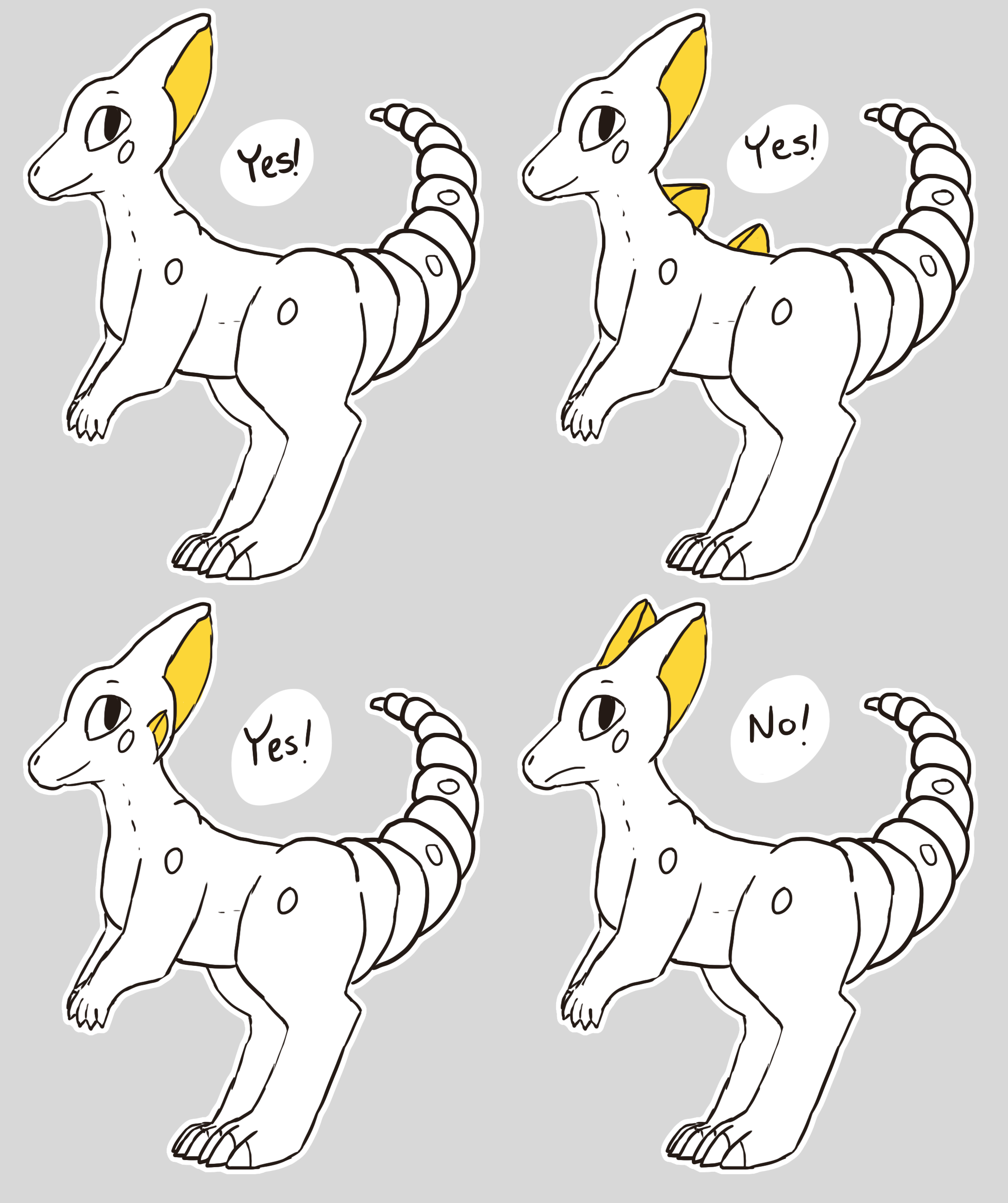
By default, Paralogos have two arms and two digitigrade legs.
Hands
- MUST have hand-like appendages
- 🖤 Variance is allowed depending on the word focus in question (f.e. Generally Paralogos are not allowed to have paw pads, but a “paw pad” or “cat” Paralogos may have them regardless)
- The hand-like appendages can be displayed in a variety of styles, from cartoony/paw-like to realistic raptor-like hands (see image)
Feet
- MUST have dinosaurian feet
- Claws are optional
- The feet can look more paw-like (depending on art style & word focus)
- 🖤 Absolutely cannot look humanoid (aka no human calves/heels and no plantigrade gait), no matter the word focus
- Paralogos’ feet normally have three or four toes (this is mostly considered a question of art style from an admin perspective)
- 🖤 Paralogos may instead have only one or two toes (hoove-like), if it makes sense for the word focus.
- 🖤 Webbing between the toes is also allowed, if appropriate.
- 🖤 They may NOT have back/dew claws or otherwise toes that go in the opposite direction from the other toes / backwards.

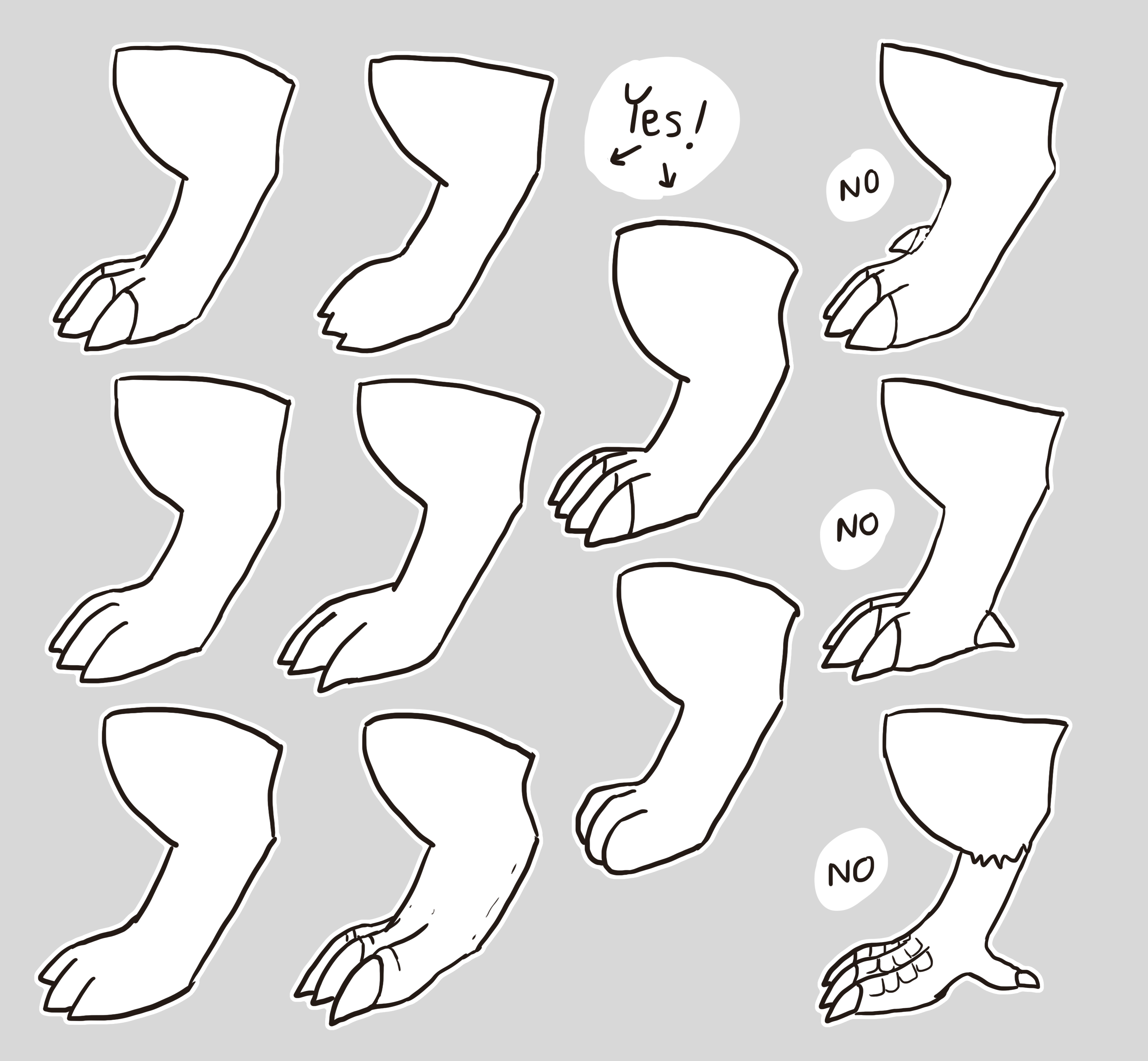
- Paralogos MUST have a leopard gecko inspired squishy/softer tail
- It must have at the very least 4 segments
- 🖤 It cannot be any longer than double their body’s length (including the head)
- A Paralogos’ tail segments/rings must always be clearly defined (example 3)
- A tail drawn/portrayed with rounded edges but no segments/rings is not acceptable (example 1)
- It is however fine of the segments/rings are clearly visible but not entirely defined (example 2)
- A tail drawn/portrayed with no rounded edges but clearly defined segments/rings is acceptable, but not preferred (example 4)
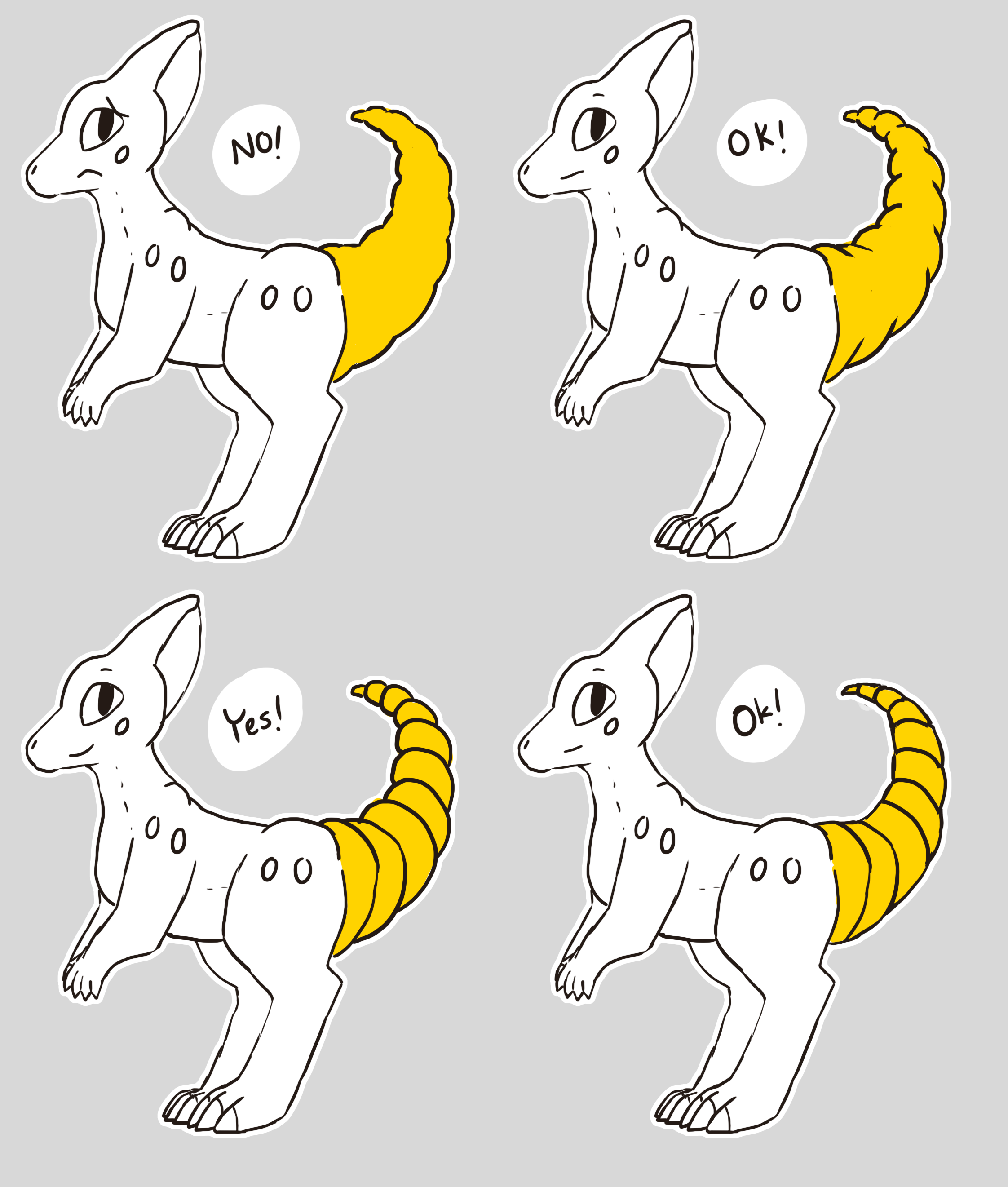
- Every Paralogos MUST have lights on their body (placement & color can vary)
- See: Chapter 8 - Paralogos Lights and Control
- We cannot define a concrete minimum amount of lights since size & shape can vary so much, but a general rule of thumb is that if you have to look closely to find the lights on the Paralogos, there are too few.
- Do note that, lore-wise, lights are how Paralogos’ cast magic and “breathe”, essentially. So please give your Paralogos enough of them.
- An absolute hard cap for maximum light coverage would be 50% of the body area.
- Lore-wise, a Paralogos' essence/"energy" slowly exits out of their lights. This is how they cast magic and uphold their physical form, but if they lose too much too quickly, they might not be able to regenerate (normally this is a symptom of injuries, but might occur in a less extreme way if the Paralogos has too many lights).
- Therefore, we recommend anything below 30% (and above the minimum) for a healthy Paralogos.
- Paralogos’ lights can be multi-colored (this can appear both like a gradient or in clear sections).
- There are no rules on how to distribute the lights - you are free to have all lights in one spot, spread them all over the body, or anything in between!
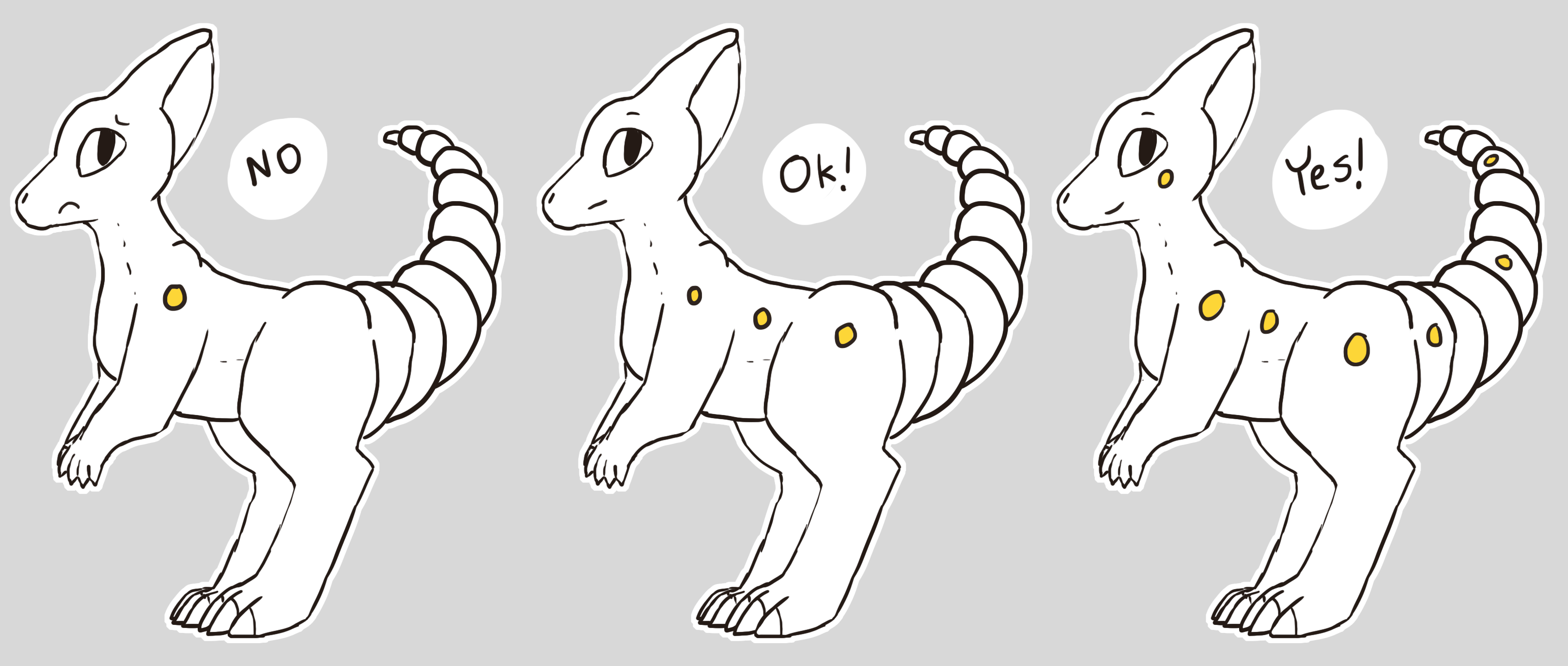
All Paralogos may have:
- Spines or little spikes/lumps on their back
- Additional fins / skin flaps on their body
- Scales
- Word Focus-related features (f.e. Fish Paralogos may have fish-like fins or gills, Snake Paralogos may have a split tongue, insect Paralogos may have antennae, turtle Paralogos may have a shell, etc.)
- Any Accessories
- Head hair
🖤 Assuming it makes sense for the word focus, a Paralogos may have:
- Wings (although they may only be functional via the use of the Paralogos’ Tier 1 Magic)
- Horns
- Fur
- Feathers
- Moving markings / floating parts / realistic elemental features / etc. via the use of Tier 1 Magic
Disabilities
- You are always free to display your Paralogos’ with disabilities (f.e. missing limbs, blindness, scars, etc.).
- This may include cases where adding them would technically constitute as breaking one of the anatomy rules (f.e. a Paralogos who is missing part of their tail may have less than 4 sections, as long as it is visually made clear that this is the case, f.e. via scarring).
- However, disabilities cannot be used to intentionally create a Paralogos that displays no Paralogos features. At its core, it still has to look like a Paralogos.
- If you have any questions about this, feel free to ask us via our Ask Questions Here prompt